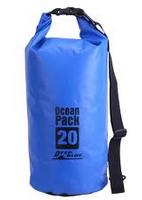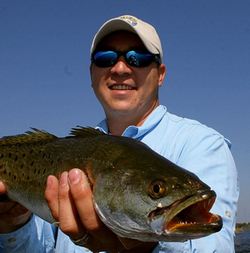 The saying “Always be prepared” is not only for boy scouts. Choosing the right paddle is important. Always think about floatation devices and the clothing you will be wearing while on the water in your canoe. Helmets help ensure you will get to play on the water again. Never forget the dry bag because a wet ham sandwich is just terrible. A knife in a canoe can be a necessity. No checklist is complete without a rope.
The saying “Always be prepared” is not only for boy scouts. Choosing the right paddle is important. Always think about floatation devices and the clothing you will be wearing while on the water in your canoe. Helmets help ensure you will get to play on the water again. Never forget the dry bag because a wet ham sandwich is just terrible. A knife in a canoe can be a necessity. No checklist is complete without a rope.
You cannot go paddling without a paddle so take two. If a paddle were to get caught in fishing line and pulled out of your hands it could be gone forever. Paddles have been known to break once in a while and duct tape just will not fix this issue. White water canoeing can call for a T-grip shaft for better grip while a calm pond paddler might have a stubbier and rounded shaft. A more flexible shaft would be more durable but stiffer means more control. Rounded blades are great for learning because a square blade may catch on the water causing instability of the canoe.
Person floatation devices come in several forms. The most common of all is the lifejacket. Even the best swimmers know to carry a floatation device. It doesn’t matter how pro you are in a canoe when a random dog decides to swim out and jump in your boat. If that dog flips you over and the undertow pulls on you, that lifejacket is going to do its job keeping you afloat and breathing air. Proper size will prevent the jacket from slipping off or being unable to secure. A bright color will make you more visible if the worst were to happen and you find yourself treading open water.
It’s amazing how many people I see heading out on a canoe or kayak trip without a pocket knife. I rarely leave the house without one let alone get into the boat with no trusty blade. The uses in both emergency and non-emergency situations are simply too long to mention – I think you get the idea! I know there are tons to choose from but just pick something small and sharp. Here’s a good list of “EDC” knives to choose from.
Helmets are only required when white water canoeing but that doesn’t mean you can’t wear one anyway. The three parts of a helmet are the outer shell, inner padding and neck strap. Outer shells can be full-cut so they cover the ears or half cut so they are not quit so big. Lucky for us, canoe helmets have come a long way so they actually look like cool hats now. The inner foam padding should fit snug enough that no gaps between the helmet and paddlers head exist. Keep that neck strap or chin strap tight enough so the helmet cannot be pushed or pulled off. This will help ensure that you get to play in your canoe again.
Clothing is less important than some things but if you canoe year round the icy waters and wind could become harsh and ruin the fun. There are many types of foot wear that prevent slipping. Some booties are multipurpose so they prevent slipping as well as keep your feet warm and some even have a knife pocket. A dry suit is completely water proof so you stay dry and warm even in the coldest rain. Wet suits are great if you play to swim in cold water while out playing with your canoe.
 Dry bag is essential for an outing. A water proof and water tight bag will keep the food from having the taste of a river. They come in all sizes so you can get one for any canoe when you plan to bring a camera. Many people store a rope and knife in a dry bag. If you were to run into a net that was anchored just pull out that knife and give it a cut before the canoe goes under. A dry bag will keep that knife from getting slippery and causing you to drop it in the water. Not all knifes need stored but all canoes need knifes incase a careless fisherman catches you by mistake. Some rope becomes useless after it gets wet so store it with the knife and munchies in the water tight dry bag.
Dry bag is essential for an outing. A water proof and water tight bag will keep the food from having the taste of a river. They come in all sizes so you can get one for any canoe when you plan to bring a camera. Many people store a rope and knife in a dry bag. If you were to run into a net that was anchored just pull out that knife and give it a cut before the canoe goes under. A dry bag will keep that knife from getting slippery and causing you to drop it in the water. Not all knifes need stored but all canoes need knifes incase a careless fisherman catches you by mistake. Some rope becomes useless after it gets wet so store it with the knife and munchies in the water tight dry bag.
Canoe trips are incredible fun when planned and prepared for. Dry snacks with a working camera to prove that fish was 40 pounds makes for an epic day. When you are warm and dry or warm and floating that protective gear has just made your day. That knife you used to free the paddle from stray fishing line kept you from needing the helmet this time. Just make that checklist and be ready for your adventure. Observing a little safety and being prepared for the worst will keep you paddling that canoe for years of fun to come.
To sum up
Here’s a quick summary of the things I mentioned:
- Spare paddles
- Pocket knife
- Personal flotation device (PFD)
- Helmet
- Non slip shoes
- Dry bag
- Rope

 Hey folks, my name is Jaymes Mansel and welcome to my blog. I grew up canoeing and fishing in the Kahnawake Mohawk Territory of Quebec. Now I'm retired and loving life in Oregon with my family and being part of the great outdoors. With all this time on my hands I wanted to share some of my stories with you. Enjoy...
Hey folks, my name is Jaymes Mansel and welcome to my blog. I grew up canoeing and fishing in the Kahnawake Mohawk Territory of Quebec. Now I'm retired and loving life in Oregon with my family and being part of the great outdoors. With all this time on my hands I wanted to share some of my stories with you. Enjoy...